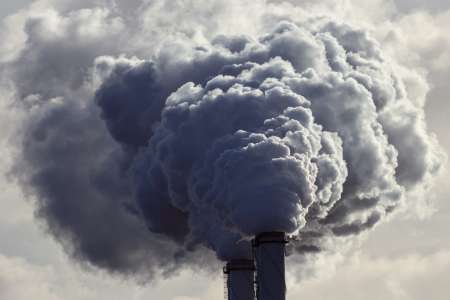Part of Our Climate Change Disaster Is Unwanted Junk Mail
You’re diligent, care about the planet, and understand that we cannot continue wasting our planet’s resources without adding to global warming and planetary pollution. Yet, rain or shine, every week you haul the garbage and recyclables out for collection, often wondering how much of it is junk mail that you never asked for and never wanted.
11/07/2024

Did You Know that the Average American Receives 41 Pounds of Junk Mail Every Year?
That’s a lot of wasted energy and resources being used for junk mail, an energy-intensive product often thrown away without ever being opened. According to the United States Postal Service (USPS), in 2020, they delivered 64.1 billion pieces of “marketing mail,” which most of us call junk mail.

Image by Steffen Thomä/CCO Public Domain
To put that in perspective, if all the “marketing mail” were sent to each of the world’s 7 billion people, then every man, woman, and child would have received over nine pieces of “marketing mail” in 2020.
Junk Mail is Costly
Outside of being a nuisance, junk mail is a costly environmental problem. Estimates are that over $500 million yearly is spent producing it, while towns and cities spend upwards of $1 billion a year to collect and dispose of it. In many cases, might there be better ways to use that money?

Wouldn’t it be nice if we could opt out and escape from this nightmare by putting “No Junk Mail” on the mailbox? It certainly would be, but it doesn’t work that way. iStock.com/OnePopPhoto
The U.S. Postal Service has mandatory policies dictating that if a piece of mail has a valid address, it gets delivered, even those addressed to “Occupant” and some with no name on them. Junk mail, like it or not, is something that all of us will continue receiving, and most of us have become resigned to a problem that nationwide amounts to billions of pieces of garbage being stuffed in our mailboxes every year.
A wasteful policy that creates problems for the planet and contributes to global climate change. From start to finish, producing and delivering junk mail is a complex, long-tailed process that begins with cutting down millions of trees needed to make the paper used in its production. And, while it’s true that many of the felled forests are replanted, they often survive as monoculture plantations, which, instead of reducing atmospheric carbon, are net emitters of it and which almost always lack biodiversity.
Mongabay has a great read on why monoculture forests are not a good idea and why we should be concerned.

A stack of wood on a trailer is ready for processing at the factory, using energy and resources that contribute to climate change. Image by Aphinan Surasit/Depositphotos
After being cut, lumber is trucked to paper processing facilities and undergoes energy-intensive processes that consume vast amounts of water and energy. The net effect often is pollution of local ecosystems and exacerbating global climate change. Add in environmental costs for ink and other chemicals used from start to finish in printing and the energy used throughout to transport unfinished and finished products, and you have an excellent recipe for needlessly harming the planet.
While we all need and desire valuable information on products and services, sending it via USPS is a great way to get it into our hands. Still, it’s more than a little perverse to deplete valuable resources by producing valueless junk mail that most of us do not want and that harms the planet’s already endangered environment.
In the Global Warming Crisis, Insanity Should Not Prevail

Every year, vast quantities of paper waste and junk mail enter landfills, causing severe environmental damage. Image by Ben Kerckx/Pixabay
Those of us who throw our junk mail into our recycle bins believe it is recycled. Much of it is not, and a substantial proportion of the unopened junk mail is garbage in landfills. That’s crazy and a brilliant question to ask might be, “How can I help the earth and our future by stopping unwanted mail from being sent?”
The short answer is that you cannot stop it entirely, but there are steps you can take to help cut down on the madness.
Best Tips to Get Rid of Paper Junk Mail
By reducing your junk mail, you’ll do your part to help preserve our environment for future generations. And it’s easier to do than you might think – following the simple steps below will lead you to a greener lifestyle.
1. Opt Out of Credit and Insurance Offers
Use OptOutPrescreen.com or call toll-free 1-888-567-8688 to stop unsolicited credit card and insurance offers from reaching your mailbox. You can opt-out for five years or permanently, significantly reducing your paper mail volume and safeguarding your personal information.
2. Register with DMAchoice to Reduce Marketing Mail
The Direct Marketing Association DMAchoice service allows you to control the types of mail you receive, including catalogs and magazine offers. For a small fee of $2, you can opt out of commercial mail from national advertisers for 10 years. This service lets you manage your preferences, significantly reducing the amount of junk mail you receive.
3. Stop Flyers, Coupons, and Other Local Mailers
To opt out of receiving mailed ads from some companies like save.com (formerly known as RetailMeNot Everyday and RedPlum), use their online opt-out form at save.com to submit your address. Once processed, it may take up to six weeks for mailings to stop due to advertising schedules being prepared in advance.
4. Return Unwanted Mail to the Sender
Write “Return to Sender” on any promotional mail labeled with “Return Service Requested” or “Address Correction Requested.” This method forces the USPS to send it back to the original sender, who often removes you from their list after repeated returns.
5. Remove Catalogs Through Catalog Choice
Sign up with Catalog Choice to opt out of specific catalogs. You can also contact catalog companies to stop delivery, which is especially useful if you receive numerous retail catalogs.
6. Limit Sweepstakes and Product Registrations
Sweepstakes and product registration forms often place you on promotional lists. Avoid filling these out when possible, or look for opt-out options if you do. Minimizing entries and product registrations can significantly reduce future unwanted mail.
7. Check Local Government Resources
Some cities provide junk mail reduction tips or programs to help residents reduce paper waste. Check your local government or waste management websites, which may offer specific resources like city-sponsored opt-out options.
8. Manage Charity Solicitations
Charities often exchange donor information. When donating, request that your details not be shared or ask to receive fewer solicitations. Many nonprofits honor these requests, which helps reduce unnecessary mail.
9. Avoid USPS National Change of Address Database
If you file a permanent USPS change of address, your details are shared with marketing databases. To prevent this, skip filing the change form and update your address with essential contacts directly. Or, use a temporary address change, which isn’t included in marketing databases and can prevent junk mail from following you.
10. Sign Up for PaperKarma to Automate Opt-Outs
PaperKarma is a mobile app that lets you snap photos of junk mail to automate opt-outs with various companies. This is a helpful service for managing high-volume or persistent junk mail senders.
11. Use the “Magic Words” for Privacy Protection
When filling out any forms, warranty cards, or subscriptions, add, “Please do not rent, sell, or trade my name or address.” This simple phrase often keeps companies from sharing your data with advertisers, helping to prevent future junk mail.
12. Digitize Statements and Bills
Request digital statements and bills from banks, utilities, and service providers to replace physical mail. This shift helps you manage finances online and significantly reduces paper clutter and the risks of mail theft.
13. Maintain an Updated List of Companies You Opt-Out From
Regularly review the companies you receive mail from and update your opt-out preferences as new senders emerge. This proactive approach controls your mailbox and ensures no new marketing lists accumulate.
The steps above cover many strategies to help you reclaim your mailbox and contribute to a more sustainable, clutter-free lifestyle. By implementing these suggestions, you’ll protect your privacy, reduce waste, and avoid the hassle of daily junk mail. For more details, check reliable sources like the Federal Trade Commission (FTC) and Privacy Rights Clearinghouse.




















